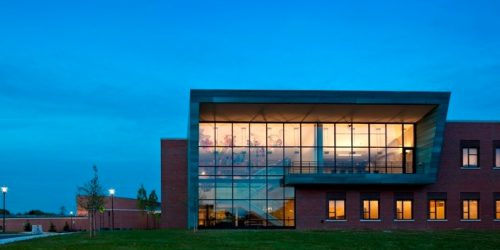About US
SAINT ELIZABETHS HOSPITAL DC Department of Behavioral Health
About Us
Saint Elizabeths Hospital is overseen by the District of Columbia Department of Behavioral Health (DBH), which addresses the treatment needs of patients at various levels and sites. Psychiatry Residents training in this community program get clinical experience at all levels of care under DBH purview over their four years in the program.
The modern Saint Elizabeths Hospital sits on a foundation of over 165 years of history and continues the tradition of serving those with the most severe and persistent mental illness in the community. This 292-bed hospital is one where patients receive treatment under an on-site multidisciplinary team who coordinate with outpatient agencies to ensure continuity of care when a patient is discharged.

Our Vision
We envision a healing environment with dedicated and committed people who provide high quality care that supports recovery and treatment. Saint Elizabeths prides itself on providing the best possible care available. Our team of clinicians and behavioral health support staff are committed to making sure that each person who comes through our doors is treated with respect, dignity, and sensitivity to spiritual and cultural norms and is empowered to be an active partner in recovery. Providing quality behavioral health care and treatment options for individuals with the goal of return and reintegration to the community of his/her choice is a responsibility we take very seriously.
Our Mission
The mission of Saint Elizabeths Hospital is to provide person-centered care that is recovery focused, consumer driven and culturally and linguistically competent.
Core Values
Accountability, Caring, Education, Quality, Recovery, and Respect To learn more about the multi-level patient care provided through the Department of Behavioral Health, please visit the official DC DBH website.
Goals
Our Saint Elizabeth Hospital goals are to strive to provide the highest quality of care, increase patient satisfaction, minimize cost, deliver timely, effective and efficient behavioral health services within the hospital-based setting, provide training and growth opportunities, and empower our staff through shared decision making to be more effective within the areas that each works.
SAINT ELIZABETHS HOSPITAL: THEN
The Saint Elizabeths Campus is situated in Washington, DC, on heights overlooking the Potomac and Anacostia Rivers. Since it opened its doors in 1855, as the first federal mental hospital, Saint Elizabeths has been a geographical and historical landmark at the center of change in American psychiatry and has been training physicians and psychiatrists throughout its history. Working at Saint Elizabeths Hospital you will grasp part of a rich legacy that has repeatedly made psychiatric history and public controversies.
When Dorothea Dix, the great mental health reformer of the nineteenth century, founded Saint Elizabeths Hospital in 1852, she gave it a mission: “The most humane care and enlightened curative treatment.” This mission and her dedication to excellence are just as relevant today as the Department of Behavioral Health strives to provide the best care in the least restrictive environment and to find new modes of treatment for those most difficult to treat.
Staff members of Saint Elizabeths were a major force in introducing psychoanalysis to the public hospital in the last century. The creative arts therapies (art, music, dance, bibliotherapy and psychodrama) and pastoral counseling have all had pioneering departments on the Saint Elizabeths Campus. These continue to provide valuable treatment and training services here. The Psychiatric Training Program was formally initiated in 1938 and since then has evolved into the ACGME-accredited Psychiatry Residency Program known today.


In 1987, the administrative control of Saint Elizabeths Hospital was transferred from the federal government to the District of Columbia Commission on Mental Health Services (CMHS), which developed a comprehensive mental health services delivery system. Because of organizational changes, the District of Columbia Department of Behavioral Health (DBH) replaced CMHS. Today under DBH there are, on average, 275 inpatients at Saint Elizabeths Hospital and a large number of outpatients throughout the community who receive preventative services and treatment from our psychiatry residents.
The DC Preservation League offers a free PDF for download of “St. Elizabeths Hospital – A History” by Thomas Otto for those interested in a more detailed historical account. The architecture and history of Saint Elizabeths Hospital was featured in an exhibition at the National Building Museum in 2017, which can be seen in the C-SPAN American Artifacts episode: St. Elizabeths Hospital.
SAINT ELIZABETHS HOSPITAL: NOW
A contemporary singular hospital building has replaced the use of the complex campus of buildings, much of which remains standing as a National Historic Landmark. The new state-of-the-art hospital contains 293 beds on two-stories and sits on a campus of approximately 450,000 square feet. The facility includes a 250-seat auditorium, two gymnasiums, an outdoor performance stage, a large outdoor recreation area, an on-site clinic with laboratory, and administrative and executive suites. The building’s therapeutic design includes bright and airy living and treatment areas, green spaces off each patient unit, and enclosed courtyards.
The video of the 2011 opening celebration for the new hospital building, shown below, showcases the innovative aspects of the facility meant to help patients with recovery from mental illness.
Residential Areas
Individuals receiving treatment at Saint Elizabeths live in small “pods”—units of 26 almost all single bedrooms—that are designed to keep them comfortable, active, and safe. Each bedroom has an exterior window for plenty of outdoor lighting. Each pod has space for dining, activities, therapy and medical care and provides access to an outdoor garden terrace.
Space for Recovery-Based Treatment
While patients reside in units, they spend their days in one of two treatment malls, which provide therapy, life skills training and other activities. As a result, their daily lives reflect the rhythm of the outside world: eating breakfast and dinner at home and working, learning, and eating lunch outside the home during the day.
Low Environmental Impact
Several features reduce the “footprint” of the building. Among them is a 32,000 square foot green roof. The natural membrane that comprises the roof naturally insulates the building and provides a natural habitat in an urban setting.
Public Access
The new Hospital features a 250-seat auditorium, providing a venue for musical and theatrical performances by individuals staying at the hospital as well as training, meetings, and events for staff and the public. An outdoor stage is used for performances in the spring and summer.
Art and History
Art commissioned by the DC Commission on the Arts and Humanities adorns the main entrance and corridors. Additionally, art created by individuals living in the hospital is featured throughout the new facility. A museum near the main entrance chronicles the hospital’s history as a leader in humane treatment of people with mental illness. Historical pieces from the old buildings can be found throughout the educational and training portion of the hospital and the library hosts numerous pieces of archived literature.
Education and Training Section
A large portion of the hospital is dedicated to space for education and training. This includes multiple classrooms, seminar rooms, and an observation training room with a one-way mirror. Many of the training programs have dedicated work rooms for their trainees with computer access to ensure they can complete their duties and build a sense of community with their colleagues. The state of the art library features meeting space, a rare books room, an archives room, and an outside veranda.
